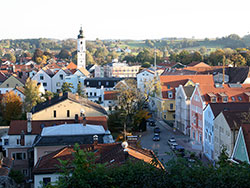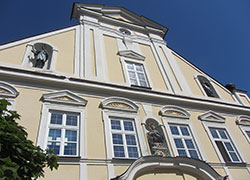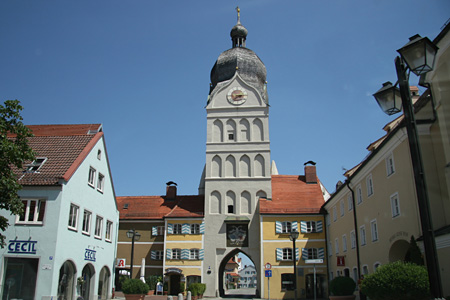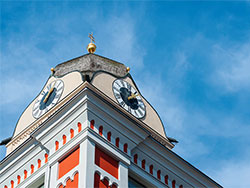Erding – a tourist area with a lot of history
The roots of some of the historic buildings in the Erding region reach back as far as the 14th century. These include the town of Erding’s landmark, the town tower with its watchman’s room. Let yourself be transported on a little journey through time – join a guided tour through the centre of town with its almost Mediterranean feeling. Numerous historical treasures are proof of the cultural heritage of our beautiful Upper Bavaria. Stroll through the charming old town centres of Erding and Dorfen and discover the idyllic interaction of nature, history and the modern in the communities in the surrounding area.
 Dorfen
Dorfen
The town in the Isen valley is introduced in the image brochure and you can get to know its’ more important historic buildings on a walk round the centre of town. There are a lot of hiking and cycling trails through the delightful countryside in the Isen valley landscape conservation area which is well worth exploring.
Erding - county town
The most important information that you need for the full Erding experience can be found in the town’s brochure "Erding Delights", a town map and the "Golden Thread", the tour of the old town centre, all of which be simply downloaded here as well as many other beautiful hiking and walking brochures.
Schöner Turm - Beautiful Tower
The Schöner Turm, right in the centre of the pretty historic part of town, is the only surviving one of four former gate towers, and the largest. With its beautiful facade the late-Gothic peel, also called the Landhuter Gate, rightly bears its title as the town’s landmark
Stadtturm - Town tower
The town tower, Stadtturm, with its total height of 46 m is the oldest building in the town. It has always served as the bell tower of the town’s parish church of St. John’s and can be visited during a guided tour of the tower. Via the 163 steps you reach the former watchman’s living quarters and hear the history and the tower pushers myth. Once you have reached the top you will be rewarded with a fantastic view over the roofs of Erding and the surrounding countryside, and on clear days, even as far as the Alps.
 Town Hall
Town Hall
The attractive building in the centre of the old town, colloquially known as the Grafenstock or Count’s Block, was built as a palace and is the former town residence of the counts of Preysing. In the 17th century the Elector was also pleased to be a guest here when he was visiting the area hunting. After the borough bought the building in 1825 it has served as the town hall.
 Frauenkircherl - Little Church of Our Lady
Frauenkircherl - Little Church of Our Lady
The Little Church of Our Lady, originally built in 1390 in late-Gothic style, has had an eventful history. In the Thirty Years’ War it was badly damaged by fire, after the battle at Hohenlinden it served the French troops as a stable and till about 1973 as a fire station. Nowadays the Frauenkircherl functions as a multi-purpose location for cultural events, especially for exhibitions and concerts. Since 1989 a glockenspiel, the tunes of which can be heard throughout the centre of town, sounds from the tower.
 Widnmann Palace
Widnmann Palace
This protected building, the palace of the Baron Joseph von Widnman, is situated in the Langen Zeile and was built in 1782 in the baroque style. Behind the palace in the Roßmayrgasse is a charming pavilion which served the state judges as garden retreat when they were residing in the palace.
 Town walls
Town walls
Today there are only two ruins as reminders of the former town fortifications. One of these is a longer piece of wall behind the Widnmann Palace in the Roßmayrgasse and the other is in the courtyard of the Foundation of the Holy Ghost where there is also a semi-circular fortified tower.
 Rivera Palace
Rivera Palace
In Münchener Street you can find the Rivera Palace, one of Bavaria‘s most important secular baroque buildings. After diverse alterations Countess Rivera’s now protected building was restored in the 1970s and returned to its original state.
 Herder cottage, Bergham
Herder cottage, Bergham
The herder cottage, as the locals call it, was built about 1650 and is one of Bavaria’s oldest farm houses. This straw thatched wooden house, the only one in the area, served the village herder and his family as their home and records very graphically just how hard peoples’ lives were in centuries gone by.






